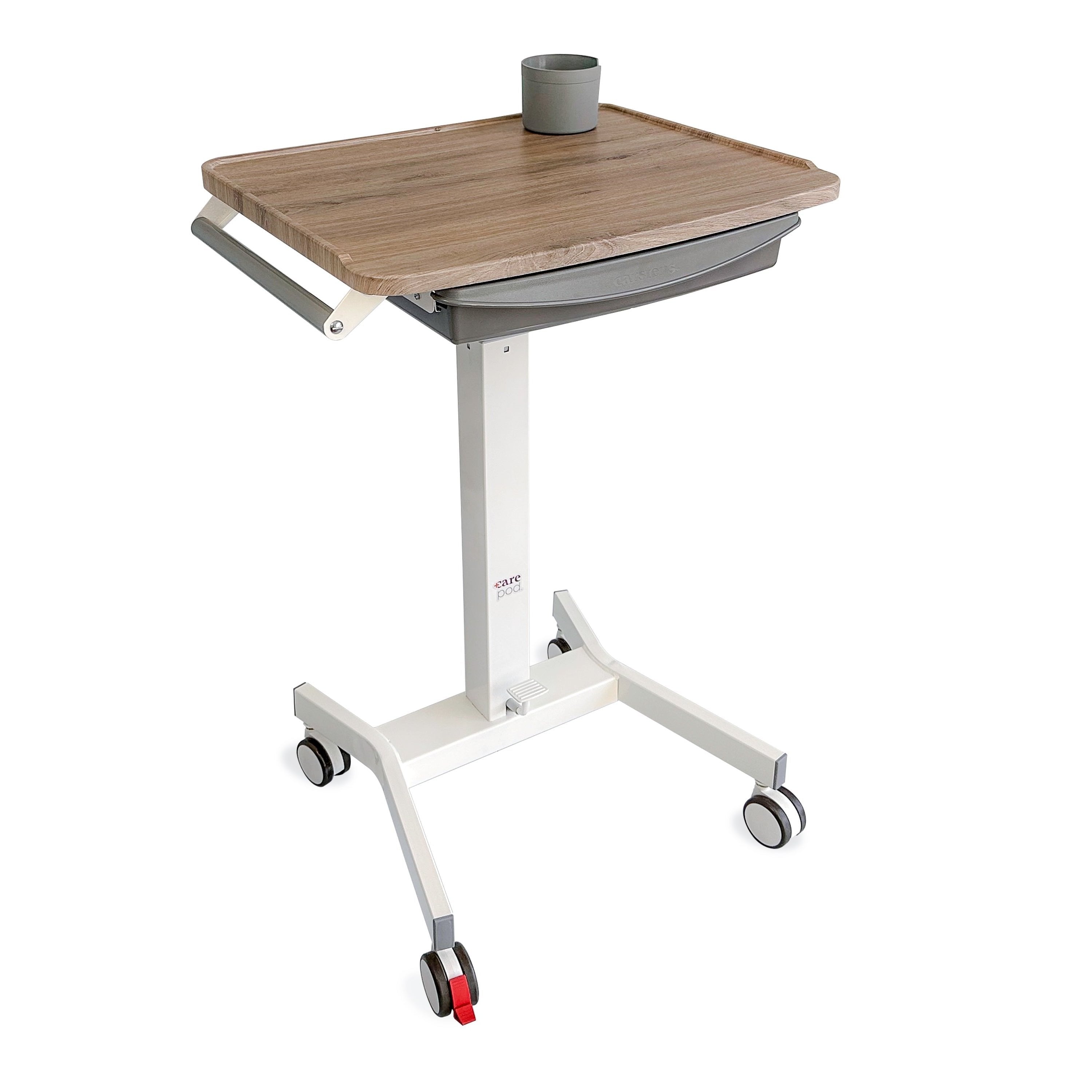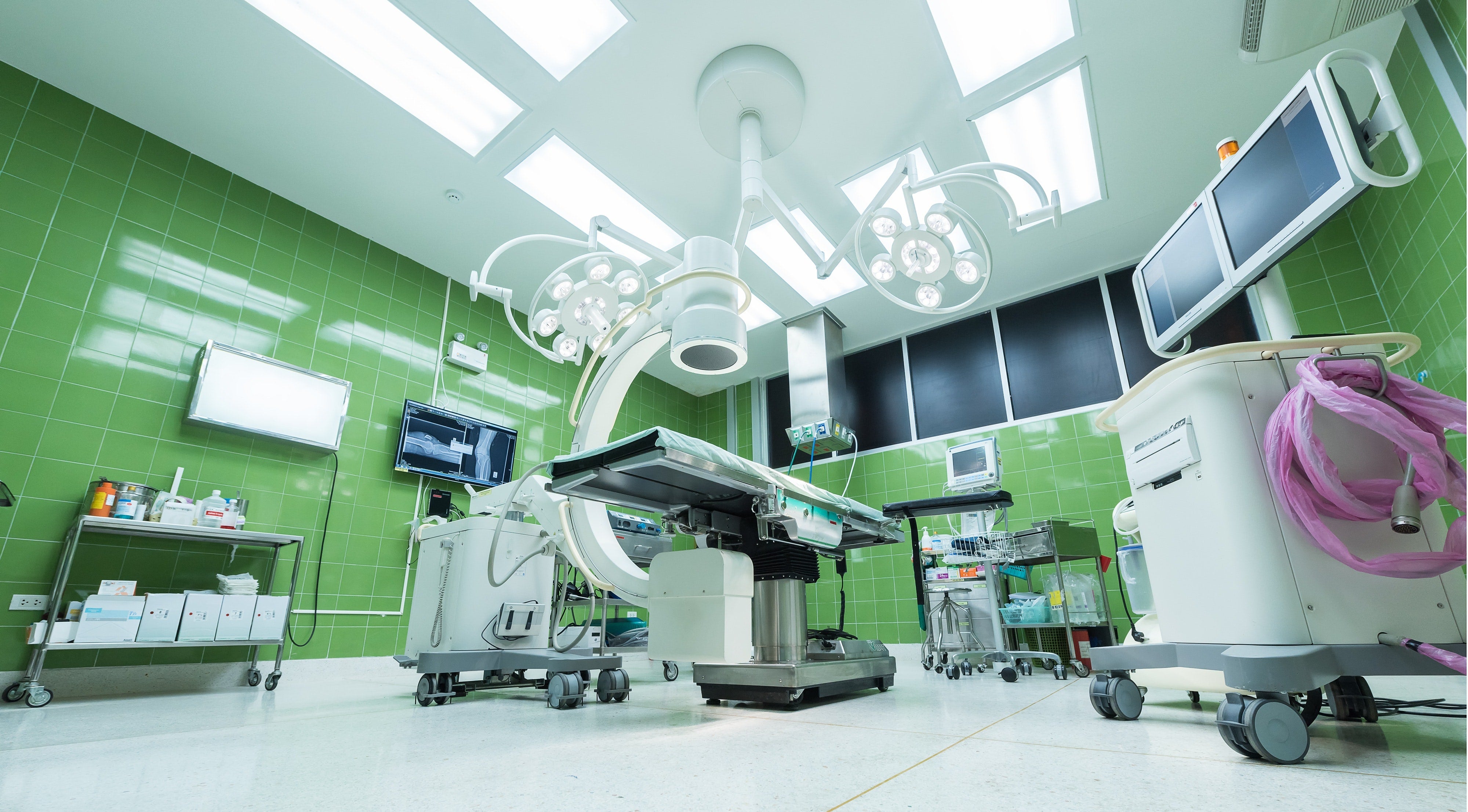Whether you manage a medical facility or operate a small doctor’s office, you want to have the best equipment for your staff and patients. These pieces of equipment can help you provide a safe and comfortable environment for everyone who visits your space.
Some equipment is a must-have for medical professionals, while others provide a little convenience for your medical staff. If you are wondering about what you need for your exam rooms, there are a few factors that you will want to consider. Here is a breakdown of the equipment that is required for your exam room.
Want to provide the best equipment for your medical facility? Reach out to the team at Carstens to find the right workflow solutions for your exam room!
Equipment for Examination
When most people go to the doctor, their first stop is the exam room. If you want to make your patients more comfortable while providing the necessary conveniences for your staff, there are a few things that you should include in the room.
For starters, an examination stool provides a comfortable space for the nurse or doctor to examine the patient. Examination lights can help those professionals get a closer look at the patient. Another must-have is a full-length, adjustable examination table and chairs for the patient and visitors. Don’t forget about an otoscope, spirometer, or ophthalmoscope to check the throat, eyes, ears, nose, and lungs.

Equipment for Diagnostics
When patients come to the office, they are looking for answers to their medical issues. The proper diagnostic equipment can help medical professionals quickly and efficiently diagnose these patients. Once a cause is found, then the patient can start treatment for their ailments.
If your medical facility is focused on primary care, you will need the basic equipment to diagnose patients properly. Stethoscopes help the doctor or nurse listen to the lungs and heart. Weight and height scales monitor whether the patient is in a healthy range or not. Don’t forget about a vital signs monitor that tracks blood pressure, heart rate, arterial blood oxygen, and temperature.
Related: Charting in Healthcare: Why It Matters
Non-Medical Equipment for Patients
Any medical facility will have non-medical equipment for their patients. These pieces of equipment help their patient feel a little more at ease when waiting to see the doctor or nurse. Some of the essential items that you may want to include pictures, cleanable chairs, and lighting. In some cases, the patients will be waiting for a bit, and you want to make them feel comfortable.

Mobile carts and storage accessories can help you keep all those essential supplies in an easy-to-access space. With wall-mounted workstations, lockboxes, medications, supplies, PPE, and electronic health record equipment are stored in space-saving centers that provide easy access to the staff.

Equipment for Your Laboratory
Whether you have an on-site laboratory or not, your medical facility still needs the basic equipment to take and manage those patient samples. This equipment can help you maintain health regulations while still protecting the integrity of the sample. Since you will probably have to draw blood, make sure there is a specialty blood drawing chair and refrigerator to cool the samples. Specimen containers can help you collect and protect urine and stool samples.
Related: What Do Color Exam Room Flags Mean?
Electronics
A medical facility not only has to provide services to the patient, but the staff must organize and protect the health records of those individuals. In most facilities, there has been a switch to using electronic health records (EHRs). In your medical office, you will need the appropriate EHR software, along with diagnostic equipment that easily integrates with the EHR. All the computers should be connected to the internet to record and collect patient information. That said, you will also need paper charting supplies and binder accessories in the event of EMR downtime. Also remember to include those basic pieces of office equipment like a fax machine, modem, and telephone.
Emergency Medical Equipment
More likely than not, you will have to handle a patient emergency. Having the right equipment on hand can make the difference between saving a life or losing one. All medical facilities should have an AED unit to help in the case of a heart attack. Oxygen and IV equipment must be readily available for staff use. Resuscitation equipment and aspirators are other items that are considered essential for those medical emergencies. Plus, no matter what, you want to keep a fire extinguisher on hand to put out any fires in the building.
Medical Equipment for Infection Control and Hygiene
With COVID-19 turning many people’s focus on health and hygiene, you need to make sure these items are in your medical office. Disposable gloves and dispensers, masks, eyewear, and gowns protect the staff and patients from bacteria and viruses. All medical facilities must carefully dispose of needles in a sharps container and include designated waste containers for medical items. You can keep your staff healthy by providing antiseptic cleaning products and hand hygiene supplies. All this equipment will keep your staff and patients safe from infections or other types of infectious diseases.
Weight and Height Scales
These basic additions are a must-have for any exam room. Recording your patient’s height and weight allows you to record their physical information in their medical chart for future reference.
While height rarely fluctuates, weight is a different story. Also known as mass balances or weight balances, weight scales give you the most accurate number possible. Tell your patient to take off their jacket, purse, or backpack before stepping on. While the patient’s clothes will still add a little extra, this addition can be factored out.
Related: Electronic Medical Issues: Pros And Cons
Reflex Hammer
This simple tool is a staple of the modern medical exam room. While you can technically feel for reflex with your fingers, the reflex hammer provides a better representation of your patient’s deep tendon health.
The reflex hammer is essential for neurological physical examination and tests for chest percussion.
Accessible Wheelchairs
Wheelchairs are a must-have addition to your exam room. At any time your patient could feel dizzy, weak, or struggle to get out of their chair. A wheelchair provides you with the ability to wheel them out of the room and get them the care they need.
Likewise, accessible wheelchairs are vital for patients who rely on them daily but cannot use their regular chairs. Make sure these wheelchairs are fitted for heavy patients and come with the ability to fold or unfold.
Fire Extinguisher
This equipment may seem like a no-brainer, but it never hurts to be careful. A fire extinguisher should be available in or nearby every room in your medical establishment.
While the majority of hospital fires are caused by cooking, a small percentage happens from medical malfunction or heating.
Improved Modem and Router
Your modem and router are necessary for facilitating a smooth Internet connection. Using outdated equipment may interfere with your ability to send medical information, receive updates, or do virtual calls.
Back Up Paper Charting
The American medical system increasingly relies on electronic medical recordkeeping. Also known as EHR, electronic records are fast, reliable, and easy to pull up in a flash.
What happens if your hospital experiences a data breach or a power outage?
Outfit your exam room with paper charting equipment to be on the safe side. You should have essential paperwork for gathering your patient’s health information, notes, pens, pencils, and a clipboard. Make sure you have a file box or a drawer where you can access this equipment quickly, as well as folders to organize your papers.
Related: Enhance Your Brand Image With Custom Products
With charting supplies to tool kits, we ensure your medical staff are always stocked with the best tools.

Desk Charger
Let’s continue on the topic of back up equipment. Once you have your desk and related diagnostic equipment set up, you need to have a backup desk charger.
Your backup desk charger should be compatible with modern medical equipment like otoscopes or monitors. These handy devices are small, portable, and will easily fit into just about any exam room set up. Make sure to keep them away from water or foot traffic.
Ergonomic Work Station
You likely already have a work station with a laptop, table, and chair. How ergonomic is your set up? Medical workers either hunch at their chairs or are constantly on their feet, both of which can cause long term health issues.
OSHA states hospitals are one of the most hazardous environments to work in. Alongside the challenges of fatigue and burnout, healthcare workers face the risk of repetitive motion injury and back pain. Outfit your work station with an ergonomic back pillow, stretching braces for your wrist, and an accessible wall station.
These little additions will help immensely with reducing chronic pain, improving your comfort levels, and making day to day administration more manageable.

The Health Benefits of Medical Art for Patients
While not technically medical equipment, this addition to your exam room will go a long way in putting your patients at ease. Stress is the last thing a patient or healthcare provider needs when getting through an appointment.
Whether you work in a hospice setting or an urgent care clinic, medical art plays a major role in helping your patients feel at ease. Medical art runs the broad spectrum of sculptures, photography, and illustration. This niche tends to embody subject matter that’s widely seen as soothing, natural, or cheerful.
Common subjects you can consider for your exam room include (but aren’t limited to):
- Mountains
- Forests
- Flowers
- Beaches
- Fruit
Medical art expands to knick-knacks and furniture to give your exam room a more welcoming vibe. While you shouldn’t go all out decorating, a few extra additions will help your patient open up and be more forthcoming. Consider adding:
- Fake plants
- Interesting diagrams
Coupled with strong lighting and effective ventilation, your medical art will help your patients feel safe and accommodated.
Related: Improving Your EHR Charting: 2022 Guide
Give your medical staff the tools they need to thrive. Contact us today for a quote or our catalog!
Other Items Needed in Examination Rooms
There are other pieces that are not mandatory, but they can be a big help for your staff. In any room, make sure there are plenty of garbage cans to contain all those used gloves, gowns, swabs, and other types of waste from the example. Put up dispensers for gloves and different types of PPE to protect your staff. IV poles and mayo stands can offer a little assistance to your nurses or doctors while treating a patient.
Related: How New Nursing Technologies are Transforming Patient Care
Do You Have the Equipment Required in an Exam Room?
If you want to operate a successful exam room for your medical facility, you need some of these basic equipment pieces for your space. Some of these components are necessary, like exam tables and stethoscopes. Other items, such as Carepod accessories and mobile carts, create a happier and more convenient workplace for your staff.
In addition, don’t forget to place personal protective equipment in each room to maintain a clean and safe environment. This equipment ensures that your medical facility operates efficiently while still being concerned for the health and comfort of both patients and staff.
Do you need help choosing equipment to manage workflow for your exam room? Go to Carstens to browse their large selection of products!






